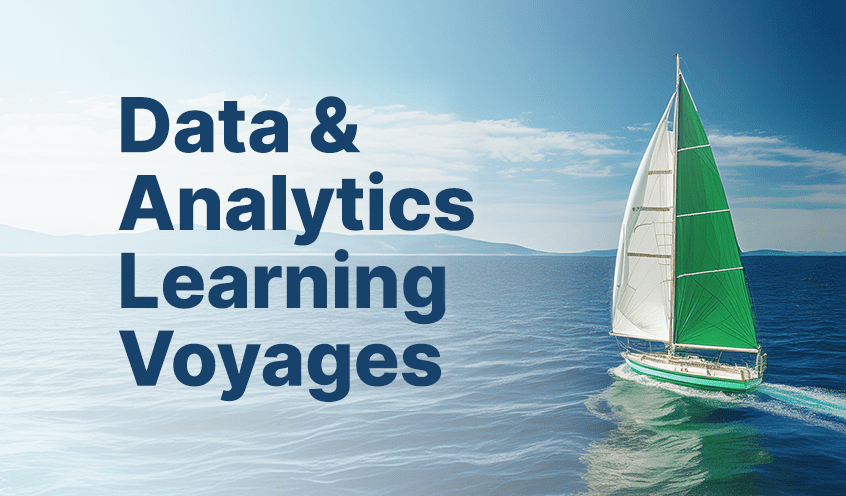Data engineers play a crucial role in leveraging the immense potential of SAP data to drive smarter decisions and foster innovation. However, integrating and analyzing this valuable information can be complex and time-consuming. But it doesn’t need to be. In this blog post, we will explore how Qlik Cloud Data Integration and Databricks together make it much easier to harness the power of SAP data and blend that data in Databricks, in a cost-effective manner.
Why SAP Data Matters & 3 Reasons Why It’s So Complex
SAP sources hold a wealth of critical business data, including customer information, financial records, and supply chain data, and more. The challenge is that business-critical data (IT data such as ERP or MES) resides in silos and is distinctly separate from the data spinning off sensors in the product line, warehouse or worker (OT data).
It is difficult to extract data from SAP applications as license limitations (e.g. HANA runtime license) restricts database-layer extraction and strongly pushes customers to maintain SAP proprietary data & analytics stack for SAP application data.
SAP is built around consistent processes and tight business integration, which helps drive down costs in production, but it increases costs in technology. It has several limitations with limited inability to incorporate external data. SAP systems were designed to use SAP generated data.
The total cost of ownership of SAP BW/HANA can be a major IT expense as the costs compound for software license and support of the analytics stack to support enterprise reporting.
The Low Latency, Low Code No Code Answer
Qlik Cloud Solutions acts as the bridge between SAP and Databricks, ensuring a seamless data integration process. Qlik Cloud Solutions provides a comprehensive suite of tools designed to simplify and accelerate the integration of SAP data into Databricks. Here are some key features and benefits:
Data Connectivity: Qlik's connectors enable seamless access to SAP data, ensuring a smooth flow of source data from SAP systems to Databricks.
Data Transformation and Model Optimization: Qlik’s transformation capabilities prep SAP data for analysis in Databricks. Data modeling tools, organize cleanse, shape, and optimize the data to fit the specific needs of analytics workflows.
Real-Time Data Streaming: Qlik’s real-time data streaming capabilities, ensure analysis is based on the most up-to-date data from SAP systems.
Pre-built Accelerators: Qlik’s open source templates jumpstart SAP analytics. Business oriented templates provide the process of starting analytics using SAP data.
7 Steps to Get Started with Qlik Cloud Solutions and Databricks Integration
To embark on the journey of SAP data integration into Databricks using Qlik Cloud Solutions follow these steps:
Step 1 - Check the GitHub Repository of SAP Accelerators:
Start your journey by accessing the GitHub Repository of SAP Accelerators available at [GitHub link]. These accelerators offer ready-to-use solutions that simplify the integration of SAP data into Databricks. Reach out to your Qlik account representative to get access and explore these valuable resources.
Step 2 - Onboarding Video:

To familiarize yourself with the capabilities of Qlik Cloud Solutions, watch this insightful onboarding video. This video provides an overview of the integration process, highlighting the key features and benefits of Qlik's connectors and data transformation tools.
Step 3 - Installation and Configuration Guide:
Next, review and follow the instructions provided in the comprehensive SAP Accelerators - SaaS Installation and Configuration Guide available at [guide link]. This guide will walk you through the step-by-step process of setting up the integration between Qlik and Databricks, enabling you to extract, transform, and load SAP data seamlessly.
Step 4 - Assess Data Requirements:
Define the key SAP data sources you want to customize and determine the desired analytics outcomes. This step helps you align the integration process with your specific data needs.
Step 5 - Implement Qlik Cloud Solutions:
Leverage Qlik's connectors and data transformation tools to extract, transform, and load your SAP data into Databricks.
Step 6 - Refine Analytics Models:
Utilize Databricks' data analytics capabilities to create models that generate insights from the integrated SAP data. Build models to gain a deeper understanding of your SAP data's potential and uncover actionable insights.
Step 7 - Visualize and Share Insights:
Leverage Qlik's data visualization tools to modify provided templates and make the insights easily accessible to stakeholders across your organization.
Conclusion:
By leveraging Qlik's connectors, data transformation capabilities, and Databricks' advanced analytics tools, you can unlock the power of your SAP data, and drive business insights.
Learn more, download Qlik and Databricks joint ebook on SAP integrations.
In this article:
Customer & Partner Spotlights












































